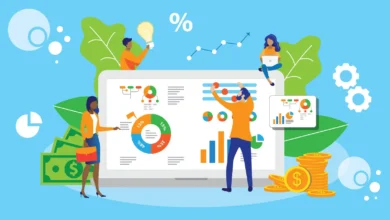Understanding the Current U.S. Tax Plan: What’s in Store for 2025?

The Tax Cuts and Jobs Act (or TCJA) enacted during Donald Trump administration in 2017 shapes the American tax landscape for 2025, too. But new proposals and changes to this tax plan have emerged since then, and ongoing tax policy discussions are poised to shape its future. With tax season around the corner for 2025, it’s important to understand what the current tax plan looks like.
What Tax Plan Are We Living Under Right Now?
Since 2017, the majority of the tax structure remains rooted in Trump’s Tax Cuts and Jobs Act (TCJA), which has had a lasting effect on both individual and corporate taxes. But many provisions in the TCJA are scheduled to expire in 2025, resulting in an additional round of proposed reforms and extensions under the Biden administration.
Major Elements of the Current Tax Plan
Coming into the end of 2025, the drafting changes inherent in the TCJA remain largely intact, including:
- Lower Tax Rates for Individuals and Corporations: Individual tax rates were lowered across multiple brackets, with the top rate falling from 39.6 percent to 37 percent. The corporate tax rate was lowered from 35% to 21%.
- Higher Standard Deduction: The standard deduction was nearly doubled, simplifying it for individuals and families to reduce their taxable income without itemizing deductions.
- SALT Deduction Cap: The TCJA limited state and local tax (SALT) deductions to $10,000, which greatly affected taxpayers in high-tax states like California and New York.
What’s New in 2025? Proposed Tax Reforms
While we are still under the shadow of Trump’s tax plan, there have been proposals in recent days to either preserve or reform certain aspects:
- Tax Cut Extensions: The Biden administration has called for making many individual pieces of tax cuts permanent. But there has been pushback about some of the cuts, such as the reduction of taxes on the richest people.
- SALT Deduction Cap Increase: There is active discussion to increase the SALT deduction cap. Others have called to raise it to $20,000, or eliminate it altogether, to deliver a break to taxpayers in jurisdictions with more costly income and property taxes.
How Are Social Security Benefits Impacted?
One of the changes discussed the most is the potential removal of certain types of Social Security benefit taxes. It offers an exemption from federal taxes for individuals whose income is below a certain level. This would be a huge boon to low-income retirees, many of whom had their benefits disproportionately taxed.
That is: Are we still under Trump’s tax plan in 2025?
Yes: Much of the tax system remains under the framework set by Trump’s 2017 tax plan — at least for now. But the perennial battle over tax reform is still shaping what the plan looks like as it develops.
Are We Provisions of Trump’s Tax Plan in 2025?
(Side note: Yes, we still operate under Trump’s tax plan in 2025, although many of its provisions are being extended, and some are being reformed, so the plan looks different in some respects.) The TCJA’s lower individual tax rates and corporate tax rates are still in place, for example, although there have been discussing changes on the horizon. The Trump-era changes would gradually expire by 2025 unless Congress enacted new legislation extending them or adapting them to the circumstances of life in 2023.
Concrete Proposals and Legislative Hurdles
A Deeper Dive Into the SALT Deduction Cap
One of the biggest changes under the TCJA was the capping of the SALT deduction, which has kept it one of the most controversial elements of the tax plan. In high-tax states such as New York and California, this $10,000 cap also has resulted in residents paying more in federal taxes, including those who have high property or state income taxes to pay.
This issue is taken up in proposals around 2025, some suggesting raising the cap to $20,000 or eliminating it completely. These changes have not yet become law, but they have been at the heart of legislative discussions about the future of the U.S. tax system.
Elimination of Specific Taxes
The second suggested reform in 2025 is to abolish federal taxes on certain excess income, such as tips, overtime pay, and Social Security payments. For the benefits received from Social Security, working to eliminate taxes for lower-income retirees, those making below certain thresholds. Retirees who are taxed on their benefits based on their total income could see substantial relief from this move.
This change would alleviate some of the financial pressure on many older Americans, especially those who are dependent on Social Security income. Workers who receive tips or overtime would also benefit from this tax reduction, resulting in more money in their pocket.
Down the Rabbit Hole: House GOP and the 2025 Tax Plan
Like any major tax reform, the proposed changes are bound to face obstacles in Congress — specifically among House Republicans. And while many Republicans have embraced extending the tax cuts and keeping the corporate tax rate at 21%, they are highly divided over spending cuts and how large should these tax cuts be.
For instance, some Republicans worry about the effects on the national debt. The tax cuts, coupled with more spending on other priorities, would have the effect of growing the federal deficit, which could raise concerns about long-term fiscal sustainability. As the legislation winds through the House, Republicans will need to balance tax cuts against spending priorities, a dynamic that could shape the final contours of the plan.
How It Affects Different Income Levels
The current tax plan benefits different groups of income earners in different ways. High income earners will benefit from the possible removal of taxes on Social Security and overtime. Meanwhile, the permanent cuts to corporate tax rates and lower tax rates on high earners may disproportionately benefit high-income households.
Some examples might include the continuation of lower income tax rates, and the potential permanent lowering of the corporate tax rate, with families with higher incomes likely receiving the greatest benefit. In the meantime, those with low- to moderate-incomes may profit from changes such as the elimination of taxes on tips and overtime pay.
Conclusion: The Future of American Taxes
As of 2025, the U. tax system is still acutely influenced by Trump’s Tax Cuts and Jobs Act, and ongoing reforms are extending and refining its provisions. The legislative debate goes on, with such proposals as raising the SALT deduction cap and eliminating taxes on some Social Security benefits.
How these reforms play out will set the course for tax policy in the U.S. for decades to come, affecting everything from individual income taxes and corporate taxes to government spending. As these dialogue progress, it’s essential for both people and companies to remain up to date on alterations that may affect their monetary planning.
Get the latest finance news with Finance Deep for more tax news and tips. Talk to a tax adviser about how these changes may affect your tax planning strategy and how to get ahead of them to improve your financial deal.





